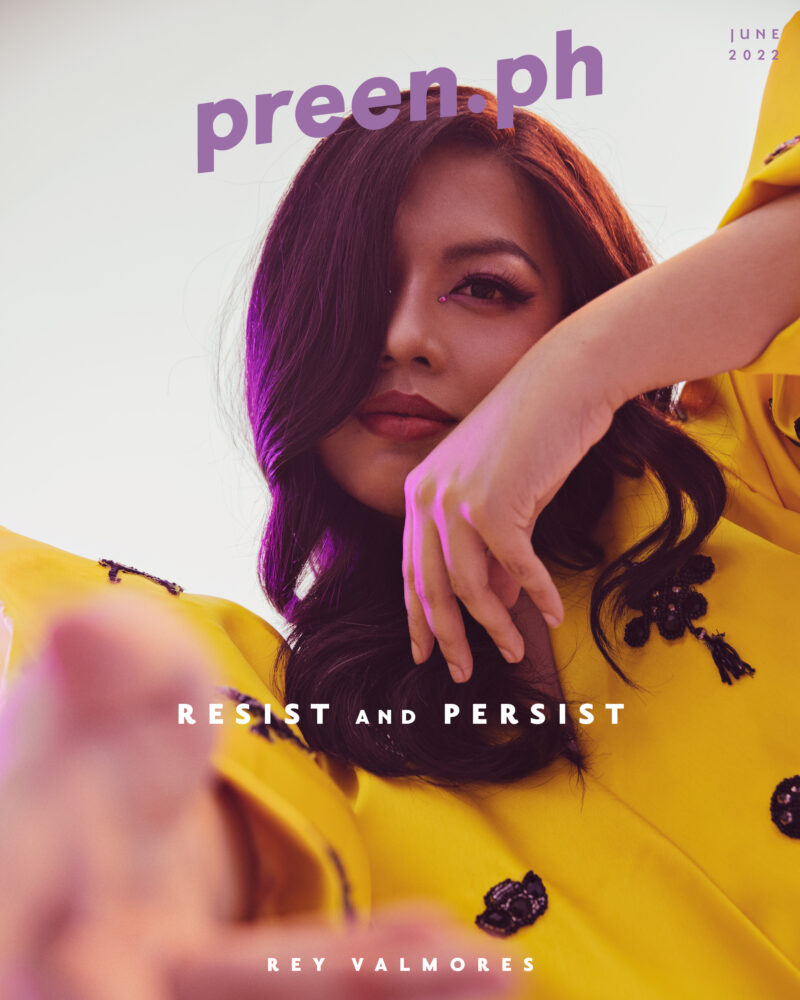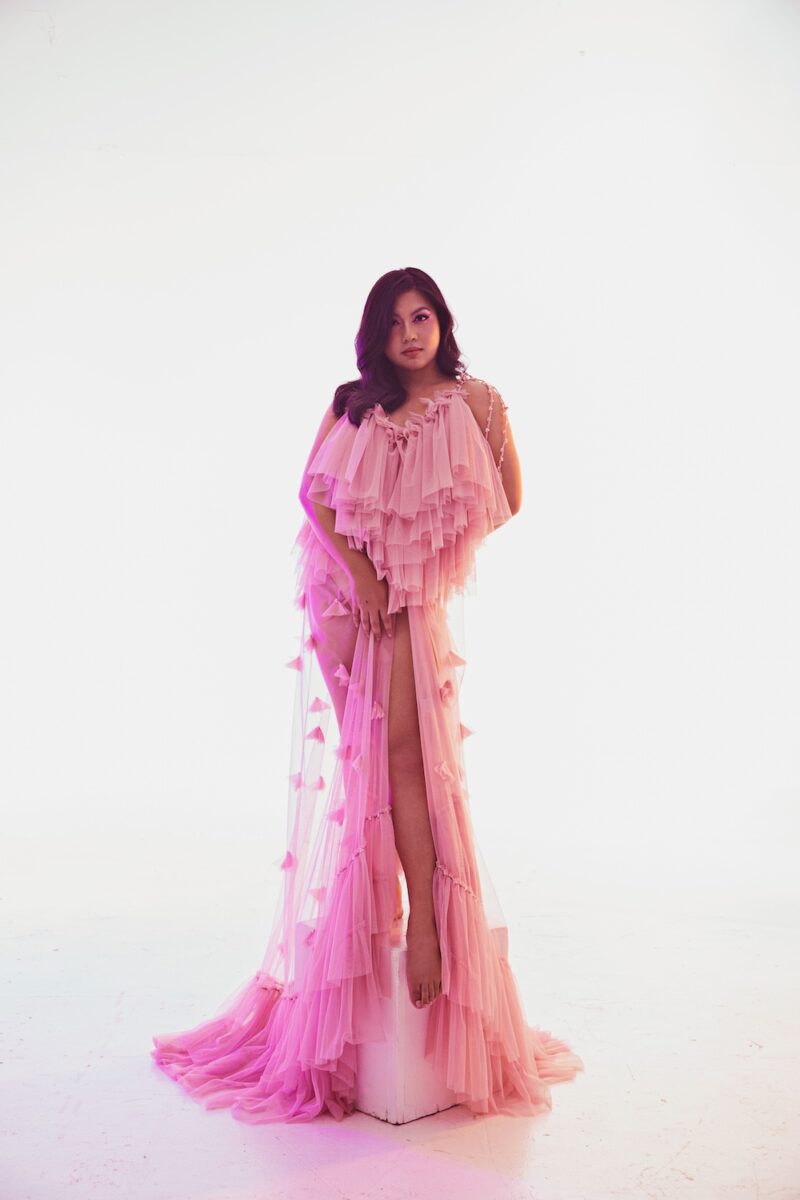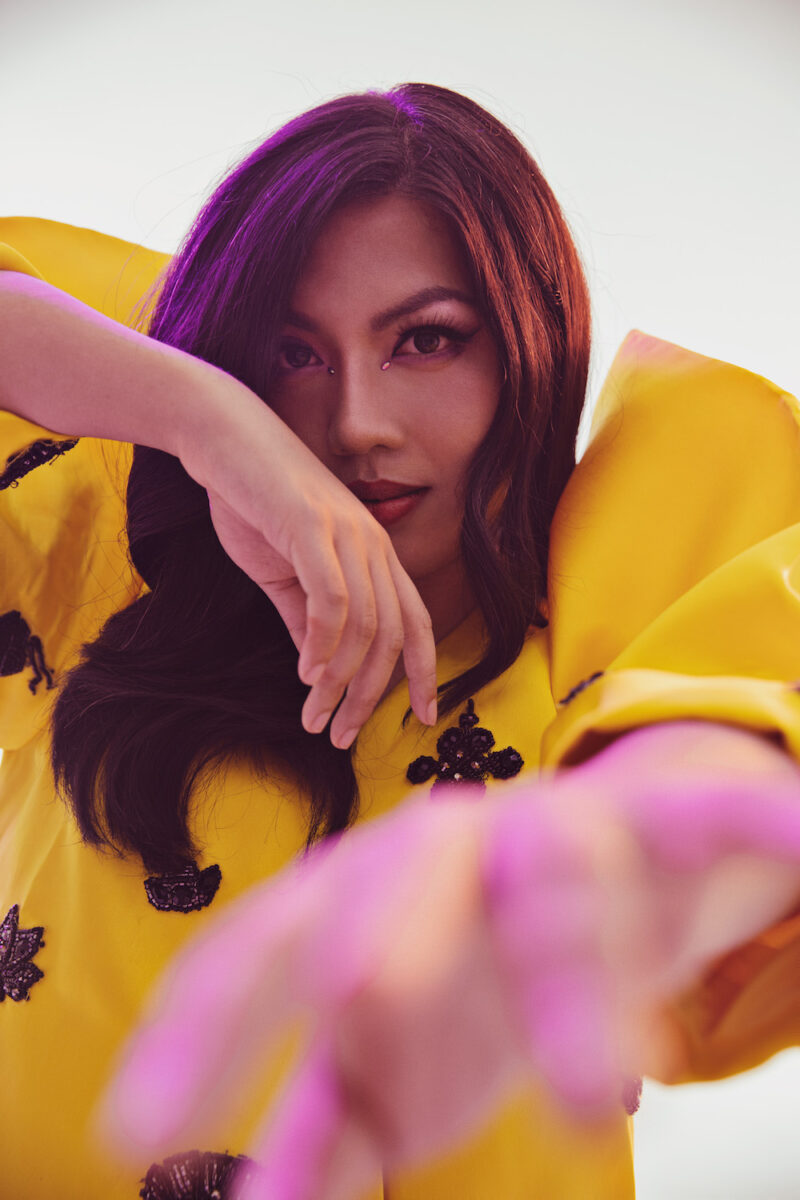At 25, Rey Valmores-Salinas has come out to herself twice.
The first time, she recalls, was during her college days in the University of the Philippines Diliman where she felt free to learn and explore more about herself than she was able to in her hometown of Tacloban City. “At first kasi, [I realized] I’m attracted to guys so I thought I was just a gay man,” Rey explains. “Parang may ganun muna na phase.”
It wasn’t until after she had graduated and started experimenting with makeup and wearing her hair long that she learned about the word—and the concept of being—transgender.
“Who you are isn’t just based on what you like,” she recalls. And this idea was what gave her the courage to finally say that she is who she is. “Babae ako, and I don’t care what society says. Ia-assert ko na babae ako.”
For Rey, an organizer and spokesperson for Bahaghari, her story is not unique.
Though some of us knew we were not quite cishet (that’s “cisgender-heterosexual” for you, if you are new to LGBTQIA+ terms), she recognizes that many have had to go through what she describes as a stage of denial or, at the very least, confusion. Bisexual women, she cites, are constantly told they should like men, and would often go through a huge chunk of their lives thinking they’re probably straight.
“So there is, especially now, power in having the words to explain your circumstances, your experiences,” she says. “’Yung articulation, mahalaga siya.”
In an ideal world, these words and labels for who we are and whom we love wouldn’t be necessary. “Pero sa kasalukuyan na pilit talagang binubura ang LGBT,” Rey points out, “there is value in our words.”

Finding herself in Bahaghari
Hearing Rey speak—whether it’s at protests, on the news, or from an open Zoom screen on a Sunday afternoon—makes it hard to imagine her not having the right words. To me and countless others, Rey is eloquent, speaking clearly and with conviction.
But I found that she is soft-spoken when she is talking about herself, a stark contrast to the volume and intensity with which she speaks about the people and causes she fights for. It’s clear though that finding her words and using her voice is as much a part of her self-discovery as it is in her activism.
As a child, Rey was shy and reserved, and couldn’t even bring herself to recite in class. She describes being in a constant state of fear. She would be anxious about doing something that might be deemed too feminine by her father and conservative teachers, who urged her to play basketball, as well as by schoolyard bullies.
Looking back now, however, she always knew she is a trans woman. Young Rey would get girls’ toys with her Happy Meals and play female characters in computer games (to this day, she’s an avid player). At the time, she didn’t understand what she was going through and who she was becoming just yet, but she realizes now that she knew, right from the beginning.
The word transgender itself arrived much later on, after joining Bahaghari as a fresh molecular biology graduate. And for Rey, it was both a homecoming and a call to action.
“When I joined Bahaghari,” she recalls, “Unti-unti kong nakita na wow, maraming tao na kagaya ko at nagsasama-sama. In fact, hindi lang nagsasama-sama, kundi lumalaban, unafraid.”
It was in Bahaghari that she began her journey not just as a trans woman but also as an activist and organizer. Here, she met one of her personal heroes, University of the Philippines professor and former Bahaghari chairperson Det Neri, who encouraged her to speak and represent the organization in different events.
And before she knew it, she found her place speaking to crowds, to journalists, and with individuals in the communities she serves. “Na-realize ko rin because of that, all of us have the capacity [to] lead. All of us have the capacity to grow no matter where we came from.”
Rey is not leaving
In another life, Rey might’ve been a molecular biologist, earning her PhD at the University of California-San Francisco.
But just as she was getting ready to pursue that opportunity, her experiences with Bahaghari—and the wider queer communities it connected her to—made her realize that her place was here.
“LGBT issues are people’s issues and people’s issues are LGBT issues. Hindi natin siya kailangang tingnan na hiwalay.”
She recalls one of her first interactions with gay and transgender people from urban poor communities. “We would ask them, ‘Ano po ‘yung problema na hinaharap niyo?’ We expected na unang sasabihin nila [is] discrimination, although siyempre nababanggit naman nila,” she says. “Ang primary [reasons] talaga nila na sasabihin sa ’yo: Mayroong demolition, mawawalan kami ng bahay; wala kaming trabaho; wala kaming maayos na katayuan sa buhay.”
For her, seeing the situation on the ground made her realize one powerful truth: She couldn’t look away. “Kailangan nandito ako,” she remembers telling herself. “Hindi pwede na talikuran ko lang ’to.”
And so Rey turned down the opportunity to work and earn her PhD in San Francisco, left her lab, and decided to become a full-time organizer. She smiles as she tells me this story, saying, “I have no regrets and I would do it all over again.”
Hardships that queer people face
To be queer, Rey explains, is to experience regular hardships but to a greater degree.
“When we say LGBT issues, people would always say na it’s discrimination. It’s true naman! It is an LGBT issue and it is a huge issue [that] really limits many of us [from] participating in society,” she explains. But, she points out, it doesn’t mean we are immune to regular issues.

“‘Di porke’t LGBT tayo hindi tayo nagugutom. ‘Di porke’t LGBT tayo ay hindi tayo bahagi ng inaabuso kapag may gobyerno tayong anti-people.”
Often, she points out, being a member of the LGBTQIA+ community makes these national issues even worse. She cites the lack of social services as one example. “We have to state it bluntly: Palpak naman talaga ang social services natin ngayon. What more kung LGBT ka?” She recalls meeting same-sex families who were not recognized by the state, and therefore were not given ayuda at the height of the COVID-19 lockdowns.
And then there is the militarized lockdowns themselves, which saw LGBTQIA+ youth assaulted by government and police officers. There is also the issue of imperialism, which brought US military forces to our shores and gave rise to not just red light districts but also thousands of cases of violence against women and childen in and around them. “Who are those Filipinos being disproportionately abused?” Rey says. “It’s women like Jennifer Laude.”
Laude’s name might be the one we’re most familiar with, but Rey points out that there have been plenty of others like her who’ve been silenced and forgotten.
“Ang puno’t dulo talaga,” she explains, is that “LGBT issues are people’s issues and people’s issues are LGBT issues. Hindi natin siya kailangang tingnan na hiwalay. These are issues that concern us at kailangan na lumaban tayo.”
After all, Rey explains that for her and Bahaghari, LGBTQIA+ people are not one-dimensional. “We’re LGBT, but we’re also workers. We’re also LGBT farmers. We’re also women. We’re also children. We’re also professionals,” she says. “The LGBT basically exist in all sectors of society, although very rarely, are in power.”
In those rare instances that queer individuals are in power, it’s important to look at what they fight for. A trans woman can have political and economic power too, after all, but her transness does not make her automatically on the side of her LGBTQIA+ brothers and sisters.
And while she may also face discrimination for her identity, her experience as a member of the ruling class can be wildly different from a poor trans woman, a gay man, or a lesbian who cannot even access basic social services. So, Rey says, we have to ask: “Ang babaeng ito, o ang baklang ito, saan siya pumapanig? Pumapanig ba siya sa inaapi o sa nang-aapi?”
To side with the LGBTQIA+, then, means understanding that the fight for LGBTQIA+ rights goes beyond the problem of discrimination. The fight has to be comprehensive. “Iisa ang laban na ’to. Kami, bilang LGBT, ipaglalaban namin ang kagalingan ng LGBT, whether that’s in the realm of anti-discrimination, in the realm of driving down prices of oil, in the realm of providing equal access to social services, et cetera.”
Worth fighting for
As an organizer fighting for these causes, Rey says the work is literally about organizing people. When she gathers individuals, it’s with a goal of letting them see the value of all of us coming together and fighting together. And this job requires a lot of compassion and flexibility.
“Kailangan talaga kilala mo ang taong ino-organize mo,” she says. When organizing the urban poor, for example, you have to know why they might be asleep until noon: It’s because many can only find work opportunities with a graveyard shift. “ Because of this, an activity scheduled for 10 a.m. might be moved to 1 p.m. or 2 p.m.
And then there are red letter days that call for protest action, like Independence Day. For these activities, Rey says, a lot of planning is required. “Pinaplanuhan ’yan, every single step is planned. ’Yung mga taong ino-organize natin, paano natin mapapakita sa kanila na mahalaga na magsalita tayo?”
View this post on Instagram
As a spokesperson for Bahaghari, Rey also spends a lot of time speaking with media outlets, who might call on her at different hours of the day. “It’s no secret na sa Pilipinas, napakaraming abuses pagdating sa LGBT,” she says. “Kahit pa asa community ka na wala o mahina ang signal, mag-a-adjust ka talaga.”
“Ang makita talaga na lumalaban ang mga tao at mahal ka ng mga tao na pinaglalaban mo, or rather, lumalaban ka alongside them, it makes it really worth it. It inspires me to look forward to more.”
But across all these different hats she must wear, Rey tells me two key things: First, that being an organizer isn’t about building wealth, and second, that the work is always done collectively.
“Hindi naman kami yumayaman sa work na ito,” she says, pointing out that she and her colleagues live a simple life. But, she shares, “Hinding-hindi ka magugutom, hinding-hindi ka malulungkot. Kasi kapag nakikita ng mga tao sa urban poor communities na pinaglalaban mo sila, parati ka nilang bubusugin sa pagmamahal.”
Rey also recalls different times people gave them bundles of vegetables. “Keep in mind [that] these are people who are already struggling economically and financially, pero they see you fighting with them. Talagang ibibigay nila lahat para sa ’yo.”
This experience is worth so much more than what she could earn in a lab, and makes everything really worth it. “Makita ’yung mga ngiti nila, ’yung pagmamahal nila at iba’t ibang porma ng pag-express ng pagmamahal. Nakabusog talaga siya ng puso. ’Yung araw-araw na buhay na bukod sa trabaho, may araw-araw din na may affirmation mula sa masa, mula sa mga karaniwang Pilipino.”
For Rey, the essence of activism and advocacy is empathy. So aside from the appreciation she sees from the communities she works with, what also warms her heart is when some decide to become organizers themselves. This is especially inspiring for her this Pride Month, when she sees more and more people pushing back against homophobia.
These things inspire her to keep going even when times get tough—when she is targeted by land owners who are displeased by her fighting for farmers’ rights, by capitalists who are against the call for higher wages, and by red-taggers who aim to discredit her work and intimidate her family.
“Mabigat siya,” Rey admits. “Pero ang makita talaga na lumalaban ang mga tao at mahal ka ng mga tao na pinaglalaban mo, or rather, lumalaban ka alongside them, it makes it really worth it. It inspires me to look forward to more.”

Collective healing
For Rey, growing up full of shame and fear over who she is is probably not unique. But what happened after—finding her voice and realizing the power in her words—doesn’t have to be unique to her.
So when I ask about what advice she can give for other kids who may also feel lost, alone, and afraid, she says, “Ang naging process ko talaga sa paglagpas sa dati kong kalagayan, sa dati kong disposition, sa dati kong fears and anxiety—na sometimes, still haunt me—ay collective healing. Ang makita na hindi ako nag-iisa. And my message is hindi ka nag-iisa.”
There is power in words, yes, but more so when we speak them together. “Marami sa atin mahuhusay on our own, individually. We are very talented people. Everyone knows that members of the LGBT community are very talented,” she points out.
“Pero kahit gaano tayo kahusay by ourselves, hindi natin kayang baguhin ang sistema nang mag-isa. And historically, those who came before us, those who fought for our rights—bagamat there is still a lot to fight for—they achieved plenty of the things we enjoy now through collective action.”
This is why collective healing and, from there, collective action, is something that Rey believes in. “Ang maipapayo ko talaga sa lahat ng mga bata na LGBT na pakiramdam ninyo ay wala nang pamamaraan para baguhin natin ito, hindi po ’yan totoo. Kayang-kaya nating baguhin ito. At kayang-kaya nating itaguyod ang isang Pilipinas na tunay na malaya para sa lahat ng Pilipino, sa lahat ng tao, whatever their gender, their sexuality is.”
“All of us have a place here, if we fight for it.”
Photos by Joseph Pascual
Story by Rai Mamac
Styling by Edlene Cabral
Makeup by Dorothy Mamalio
Hair by Mong Amado
Creative direction by Neal Alday, Pammy Orlina, and Nimu Muallam
Produced by Zofiya Acosta
Assisted by Amrie Cruz
Follow Preen on Facebook, Instagram, Twitter, TikTok, YouTube, and Viber


